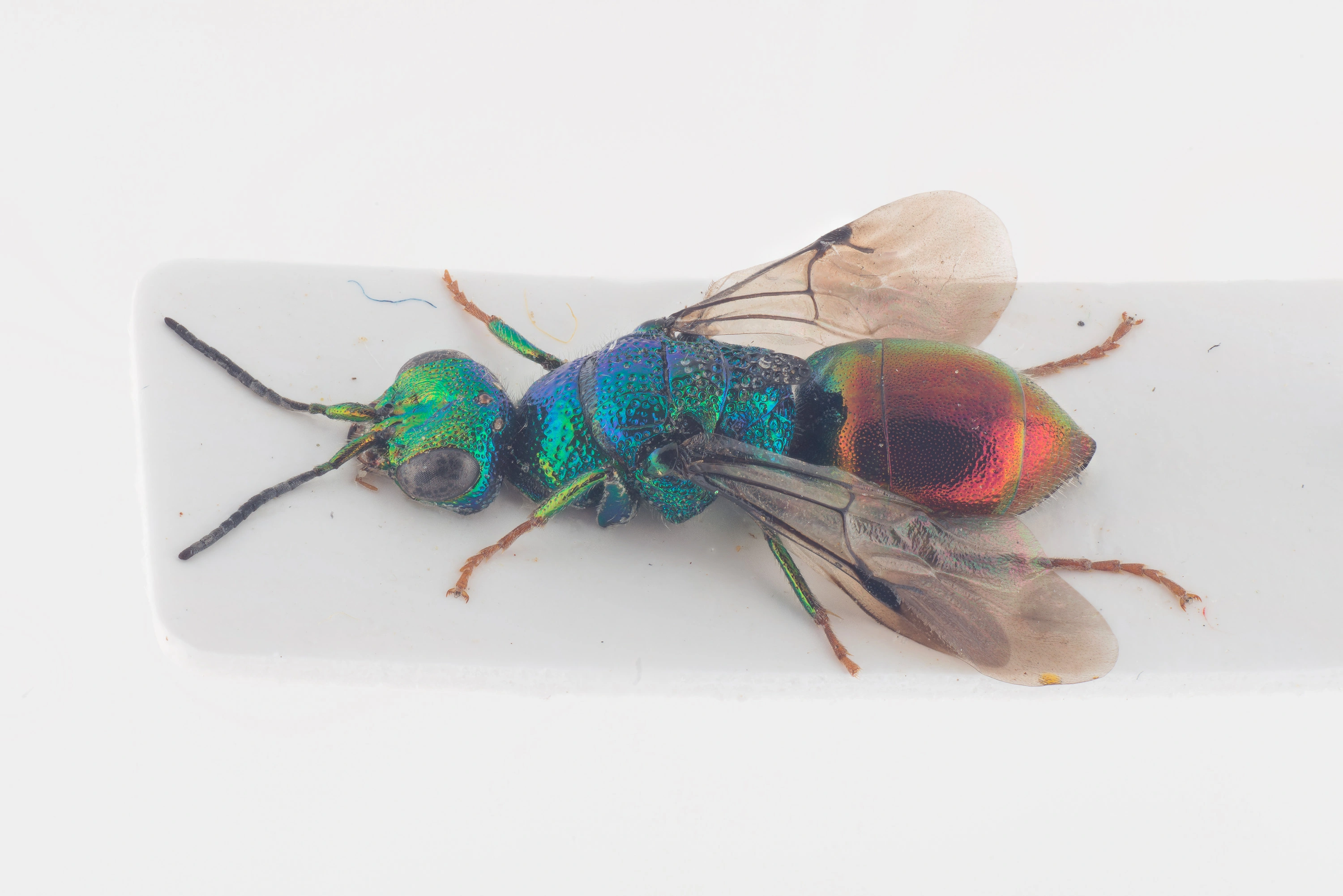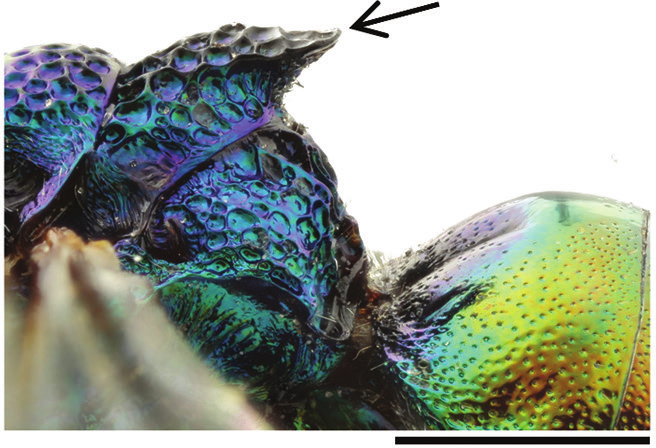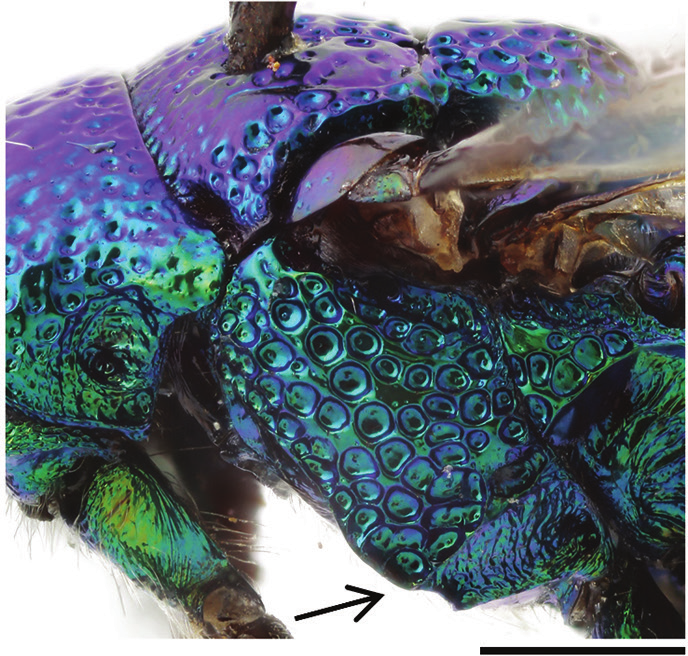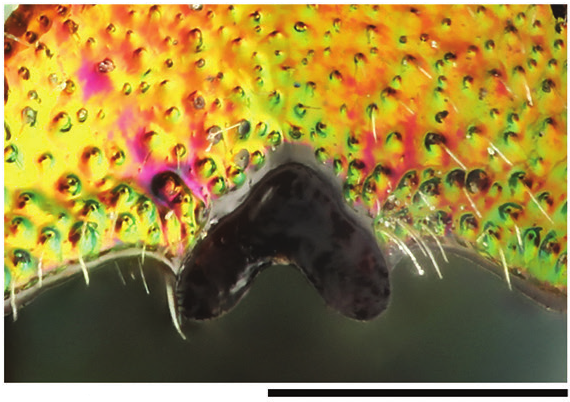Elampus foveatus
The species has been recently recorded from Fennoscandia occurring in the same localities as other Elampus-species. The hosts are Crabronidae of the genus Mimesa. E. foveatus differs from closely related species by weaker punctation of the tergites and the unique shape of the apical truncation of T3.
- Innhold
- Diagnosis
- Distribution
- Biology
Diagnosis
Figure 38
Metascutellum, propodeum and T1, lateral view (arrow indicating metascutellar projection): Elampus foveatus ♀. Scale 0.5 mm.
Figure 40
T3, lateral view: E. foveatus ♀. Scale 0.5 mm.
Figure 43
Mesopleuron, lateral view (arrow indicating junction of omaulus and scrobal carina): E. foveatus ♀. Scale 0.5 mm.
Figure 46
T3, postero-dorsal view: E. foveatus ♀. Scale 0.5 mm.
Length 5–8 mm.
The species can be confused with E. constrictus and E. panzeri, but the apical truncation of T3 has rounded margins ventrally and resembles a thick, upside-down U in shape (Fig. 46). The lateral margins of T3 are similar to E. constrictus (Fig. 40). The punctation of T2 is somewhat more irregular than in E. constrictus, and usually an impunctate medial line is formed anteriorly. The scrobal carina ends below the angle of the omaulus (Fig. 43) as in E. panzeri. The head and mesosoma are blue or greenish, and the metasoma is red with green reflections in both sexes.
Distribution
Estonia, Finland, Norway, Sweden. Rare.
Trans-Palearctic: from the Netherlands to Siberia (Usolye-Sibirskoye). The distribution is still poorly known, because many authors have confused E. foveatus with other closely related taxa.
Biology
Habitat: sparsely vegetated sandy areas. In Germany, specimens have been found on Sambucus bushes (Niehuis and Gauss 1996).
Flight period: May to July.
Host: unknown.




